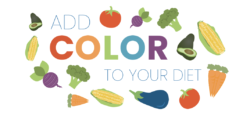

Cook fresh or frozen vegetables in the microwave for a quick-and-easy dish to add to any meal. Steam green beans, carrots, or broccoli in a bowl with a small amount of water in the microwave for a quick side dish.
Cut up a batch of bell peppers, carrots, or broccoli. Pre-package them to use when time is limited. You can enjoy them on a salad, with hummus, or in a veggie wrap.
If dinner is away from home, no need to worry. When ordering, ask for an extra side of vegetables or side salad instead of the typical fried side dish.
Buy vegetables that are in season for maximum flavor at a lower cost. Check your local supermarket specials for best-in-season buys. Or visit your local farmer’s market.
Frozen vegetables are quick and easy to use and are just as nutritious as fresh veggies. They often come pre-chopped so you can save time; by using only what you need, you reduce waste.
Canned vegetables are a great addition to any meal. They are often on sale, and have a long shelf-life. Select those labeled as “reduced sodium,” “low sodium,” or “no salt added.”
Heat it and eat it. Try tomato, butternut squash, or garden vegetable soup. Look for reduced or low-sodium soups.
Brighten your salad by using colorful vegetables such as black beans, sliced red bell peppers, shredded radishes, chopped red cabbage, or watercress.